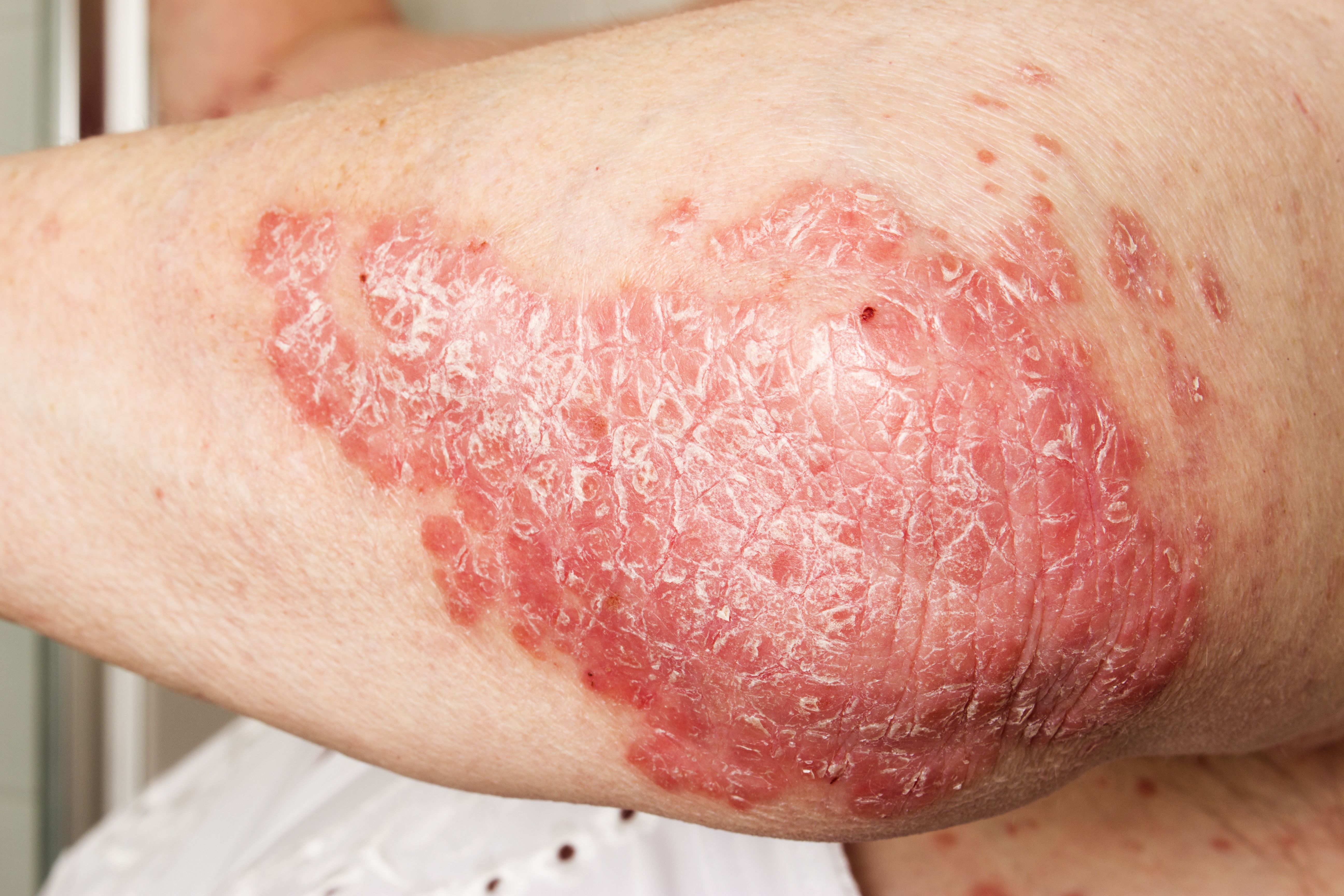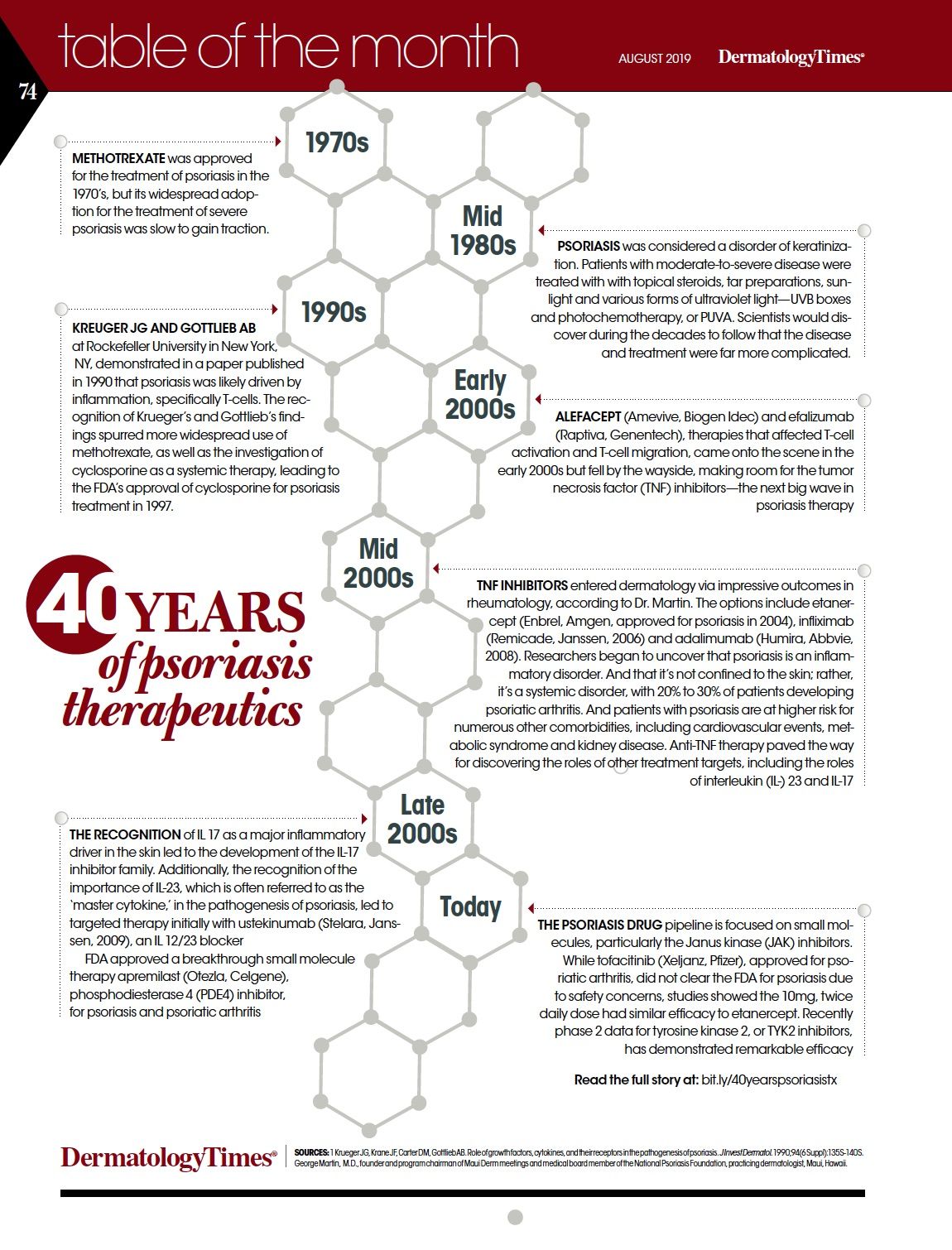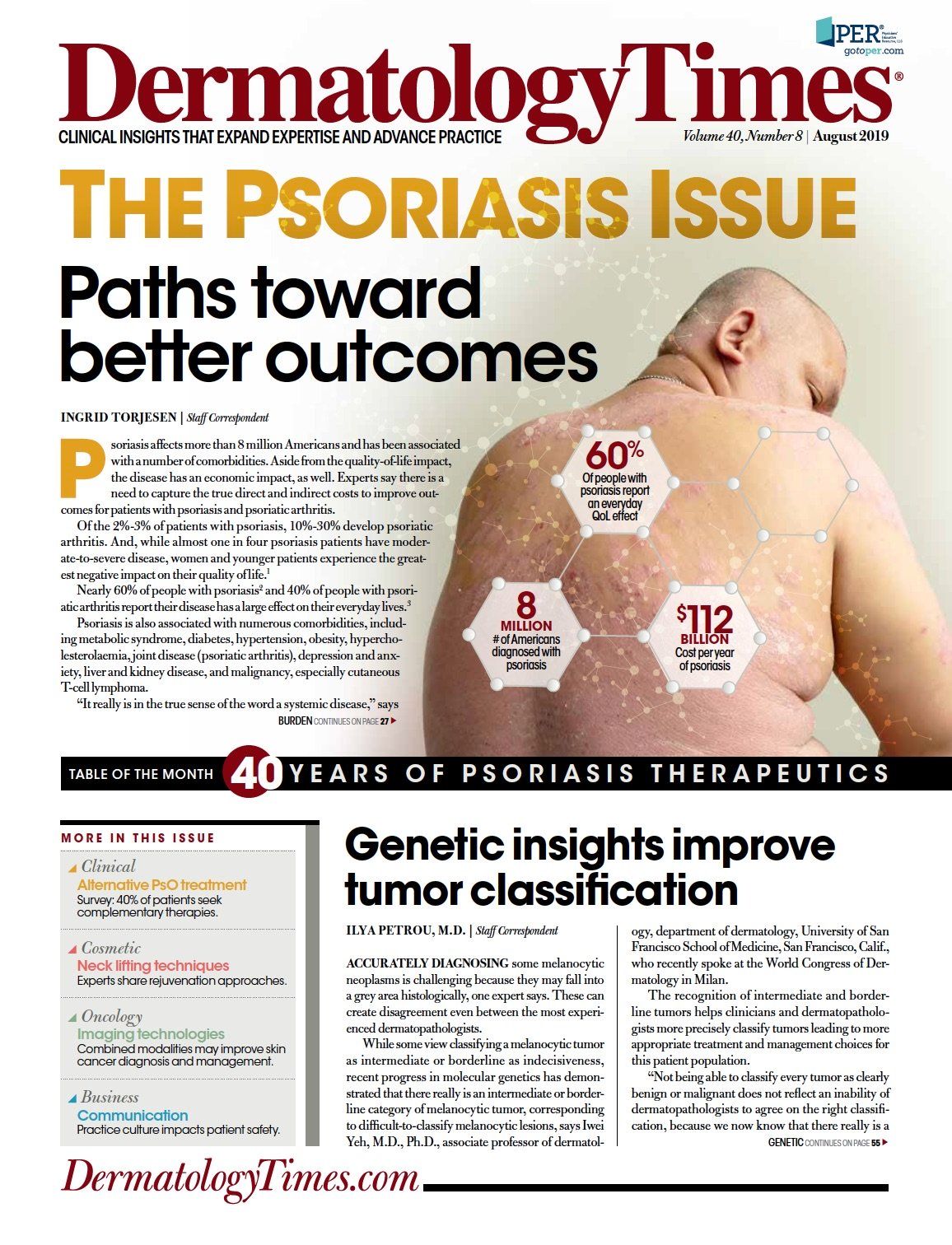- Case-Based Roundtable
- General Dermatology
- Eczema
- Chronic Hand Eczema
- Alopecia
- Aesthetics
- Vitiligo
- COVID-19
- Actinic Keratosis
- Precision Medicine and Biologics
- Rare Disease
- Wound Care
- Rosacea
- Psoriasis
- Psoriatic Arthritis
- Atopic Dermatitis
- Melasma
- NP and PA
- Skin Cancer
- Hidradenitis Suppurativa
- Drug Watch
- Pigmentary Disorders
- Acne
- Pediatric Dermatology
- Practice Management
- Prurigo Nodularis
- Buy-and-Bill
Publication
Article
Dermatology Times
Table: 40 years of psoriasis therapeutics
Author(s):
In this table, we highlight how psoriasis treatments have evolved over the past four decades.
(Milan Lipowski - stock.adobe.com)

Overview of psoriasis treatments over past forty years.

.
1970s
Methotrexate was approved for the treatment of psoriasis in the 1970’s, but its widespread adop- tion for the treatment of severe psoriasis was slow to gain traction.
Mid 1980s
Psoriasis was considered a disorder of keratiniza- tion. Patients with moderate-to-severe disease were treated with with topical steroids, tar preparations, sun- light and various forms of ultraviolet light-UVB boxes and photochemotherapy, or PUVA. Scientists would dis- cover during the decades to follow that the disease and treatment were far more complicated.
1990s
Kreuger JG abd Gottlieb AB at Rockefeller University in New York,⨠NY, demonstrated in a paper published in 1990 that psoriasis was likely driven by inflammation, specifically T-cells. The rec- ognition of Krueger’s and Gottlieb’s find-â¨ings spurred more widespread use of methotrexate, as well as the investigation of cyclosporine as a systemic therapy, leading to the FDA’s approval of cyclosporine for psoriasis treatment in 1997.
Early 2000s
Alefacept (Amevive, Biogen Idec) and efalizumab (Raptiva, Genentech), therapies that affected T-cell activation and T-cell migration, came onto the scene in the early 2000s but fell by the wayside, making room for the tumor necrosis factor (TNF) inhibitors-the next big wave in psoriasis therapy
Mid 2000s
TNF inhibitors entered dermatology via impressive outcomes in rheumatology, according to Dr. Martin. The options include etaner- cept (Enbrel, Amgen, approved for psoriasis in 2004), infliximab (Remicade, Janssen, 2006) and adalimumab (Humira, Abbvie, 2008). Researchers began to uncover that psoriasis is an inflam- matory disorder. And that it’s not confined to the skin; rather, it’s a systemic disorder, with 20% to 30% of patients developing psoriatic arthritis. And patients with psoriasis are at higher risk for numerous other comorbidities, including cardiovascular events, met- abolic syndrome and kidney disease. Anti-TNF therapy paved the way for discovering the roles of other treatment targets, including the roles of interleukin (IL-) 23 and IL-17
Late 2000s
The recogniztion of IL 17 as a major inflammatory driver in the skin led to the development of the IL-17 inhibitor family. Additionally, the recognition of the importance of IL-23, which is often referred to as the ‘master cytokine,’ in the pathogenesis of psoriasis, led to targeted therapy initially with ustekinumab (Stelara, Jans- sen, 2009), an IL 12/23 blocker FDA approved a breakthrough small molecule therapy apremilast (Otezla, Celgene), phosphodiesterase 4 (PDE4) inhibitor, for psoriasis and psoriatic arthritis
Today
The psoriasis drug pipeline is focused on small mol- ecules, particularly the Janus kinase (JAK) inhibitors. While tofacitinib (Xeljanz, Pfizer), approved for pso- riatic arthritis, did not clear the FDA for psoriasis due to safety concerns, studies showed the 10mg, twice daily dose had similar efficacy to etanercept. Recently phase 2 data for tyrosine kinase 2, or TYK2 inhibitors, has demonstrated remarkable efficacy






